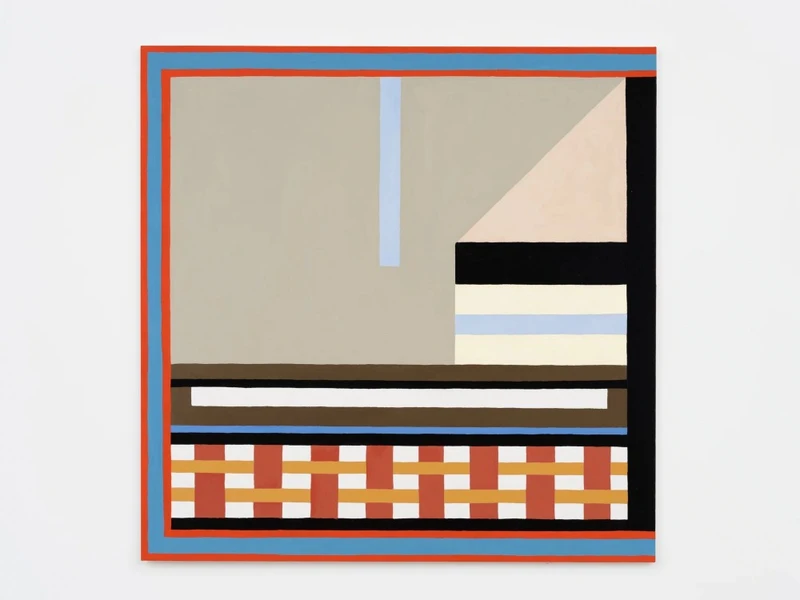Nathalie du Pasquier: LE CORBEAU ET LE RENARD
28 Apr-25 May 2023
PV 27 Apr 2023, 6-8pm


Pace Gallery is pleased to detail LE CORBEAU ET LE RENARD, a solo exhibition of Milan-based artist, Nathalie Du Pasquier.
Taking over one of the Hanover Square gallery spaces in her idiosyncratic style, this exhibition will mark the artist’s first show in the UK for more than five years. Du Pasquier will present a suite of new paintings and constructions in her signature visual lexicon of vivid colours and modular forms.
Expanding the language of her paintings onto the walls and into the centre of the gallery space, Du Pasquier’s distinctive approach to art making is immersive and deeply stimulating. At the core of the artist’s practice is an exploration of form, colour, and space through subversive and unexpected means. Firmly centred in the practice of painting, her work draws inspiration from a myriad of visual sources that range from the Italian Metaphysical painters, to modernist architecture, furniture, and functional objects. Du Pasquier conceives her exhibitions as a total work of art, painting the walls with a bespoke design that activates the gallery space and constructs a visual rhythm through which dynamic dialogues between painting and object are formed. This all-encompassing conception of an exhibition speaks not only to the relationships between objects, but also the viewer’s place within the space.
Displayed in the centre of the gallery, Du Pasquier’s wooden constructions represent a very recent development in her practice, bringing her paintings into three-dimensions to be seen from multiple vantage points. Akin to the renowned architectural installations displayed in recent major exhibitions at the Le Corbusier designed Villa Savoye in Poissy, France, the Palais de Tokyo in Paris, France, and the MACRO in Rome, Italy, these painted wooden works appear to leap from the gallery wall and enter the viewer’s physical space.
Replete with spatial tension, Du Pasquier’s visual lexicon is rooted in juxtaposition. Newly conceived, her constructions contain soft curves of painted wooden forms set against incisive, rectangular edges. Likewise, earth-toned hues of blue, green, beige, and brown contrast brilliant reds and yellows. The result is a vibrant and expressive energy that draws viewers into Du Pasquier’s unique vision. Her use of unmodulated colour obfuscates traditional perceptions of depth, confounding expectations to provoke engagement with the forms themselves, as well as the qualities inherent to canvas or wood. Instead, some works use colour to suggest a sense of perspective; grey or black forms may recall a sharp shadow in the vein of artists such as Giorgio Morandi and Giorgio de Chirico, whose mysterious, unsettling compositions hold significant inspiration for Du Pasquier.
Borrowing its title from a well-known French moral fable by Jean de La Fontaine, LE CORBEAU ET LE RENARD is a lesson in complacency, warning against egos inflated by flattery. While the works in this playful exhibition do not make direct reference to the poem, in titling the exhibition after this children’s tale, Du Pasquier is inviting viewers to engage with artworks and gallery spaces with fresh eyes.
Nathalie du Pasquier: LE CORBEAU ET LE RENARD | press release
Download